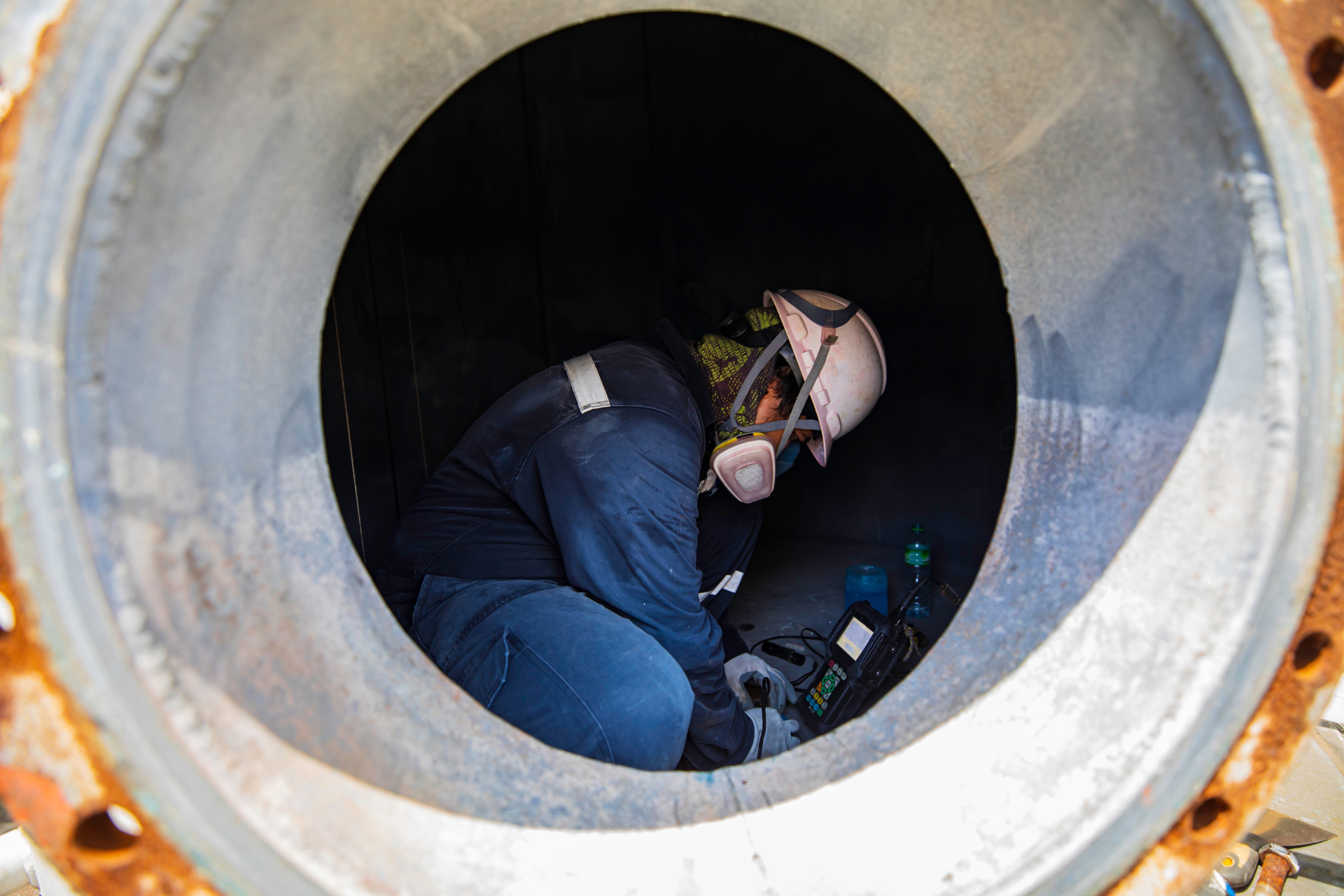When is a confined space medical required?

Wondering if you need a confined space medical for your new or current role? This specialist medical is intended to minimise the risks that employees face when working in confined spaces and covers a wide range of workplaces, so let’s take a closer look at the requirements regarding this important medical assessment.
Understanding confined spaces
A confined space is an area with limited entry and exit points that is not designed for continuous occupancy. They do not have to be particularly small spaces and they are defined by the HSE as “a place which is substantially enclosed (though not always entirely) and where serious injury can occur from hazardous substances or conditions within the space or nearby (e.g. lack of oxygen).”
This broad definition encompasses a range of spaces across numerous industries. From construction silos, to mining chambers, to manufacturing tanks, any space with limited entry and exit points risks poor ventilation for workers, the potential exposure to hazardous substances, and the increased risk of entrapment and injury due to limited mobility.
Workplaces must constantly be aware of the dangers posed by these settings and put the right measures in place to protect their employees – including requiring their workers to pass the mandatory medical assessments.
Who needs a confined space medical?
This medical is required for any worker who is expected to regularly enter confined or restricted spaces as part of their job role. So, whether you are a construction worker, a utility worker, maintenance personnel, or someone who is involved in the inspection of tanks, storage bins, or tunnels, then you must attend and pass this important medical examination.
The confined space medical assesses the physical fitness and wellbeing of a worker, checking that they are able to safely navigate these confined areas without endangering themselves. This includes as part of the pre-employment assessments for new hires and as routine health checks for existing employees, as these spaces become particularly hazardous for those with existing conditions. It is also important that the onsite rescuers or those who are on-hand during an emergency have passed this medical, as they need to be able to carry out fast rescue missions at short notice and must be protected whilst attending the scene.
What does a confined space medical include?
This medical includes a set of physical evaluations to assess an employees’ physical fitness and to verify their ability to perform their responsibilities. The medical must be completed every five years at minimum, and it may be recommended again during this time based on the risk factors in the workplace or the employee’s medical history.
The physical assessment covers a broad range of checks, as the main aim of the medical is to identify any health conditions that would present risks in areas with limited room to move. This includes shortness of breath, hypertension, and a limited range of movement that would make it hard to quickly exit the space if it becomes dangerous.
So, when attending the examination, you can expect to undergo checks for:
- Your overall health, including a review of any existing conditions or causes for concern.
- Good vision and hearing.
- Heart conditions that could be triggered by strenuous activity or stress, including a blood pressure measurement.
- Respiratory function to check you are able to breathe in potentially low-oxygen environments and to assess any underlying issues that could be made worse by working in a confined area.
- Mobility, strength, and flexibility to check your range of movements to navigate tight spaces and safely exit them when needed.
Medicals from Heathrow Medical
This medical should be included as one element of a wider health and safety strategy that must be in place to protect employees as they perform their roles. So, if you are responsible for putting these protective and preventive measures in place across your workplace, get in touch with us or book your team’s medical today.
